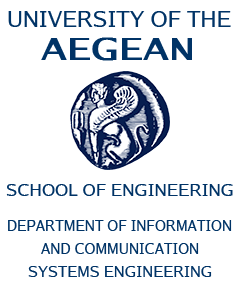Education
Research Interests
Teaching Activities
Journals
Copyright Notice: This material is presented to ensure timely dissemination of scholarly and technical work. Copyright and all rights therein are retained by authors or by other copyright holders. All persons copying this information are expected to adhere to the terms and constraints invoked by each author's copyright. In most cases, these works may not be reposted or mass reproduced without the explicit permission of the copyright holder.
Abstract
Reflection-based volumetric distributed denial-of-service (DDoS) attacks take advantage of the available to all (open) services to flood and possibly overpower a victim's server or network with an amplified amount of traffic. This work concentrates on two key protocols in the assailants' quiver regarding DoS attacks, namely domain name system (DNS) and simple service discovery protocol (SSDP). Our contribution spans three axes: (a) We perform countrywide IP address scans (probes) across three countries in two continents to locate devices that run open DNS or SSDP services, and thus can be effectively exploited in the context of amplification attacks, (b) we fingerprint the discovered devices to derive information about their type and operating system, and (c) we estimate the amplification factor of the discovered reflectors through a dozen of diverse, suitably crafted DNS queries and a couple of SSDP ones depending on the case. The conducted scans span fifteen months, therefore comparative conclusions regarding the evolution of the reflectors population over time, as well as indirect ones regarding the security measures in this field, can be deduced. For instance, for DNS, it was calculated that the third quartile of the amplification factor distribution remains more than 30 for customarily exploited queries across all the examined countries, while in the worst case this figure can reach up to 70. The same figures for SSDP range between roughly 41 and 73 for a specific type of query. To our knowledge, this work offers the first full-fledged mapping and assessment of DNS and SSDP amplifiers, and it is therefore anticipated to serve as a basis for further research in this ever-changing and high-stakes network security field.
Conferences
Copyright Notice: This material is presented to ensure timely dissemination of scholarly and technical work. Copyright and all rights therein are retained by authors or by other copyright holders. All persons copying this information are expected to adhere to the terms and constraints invoked by each author's copyright. In most cases, these works may not be reposted or mass reproduced without the explicit permission of the copyright holder.
Books
Copyright Notice: This material is presented to ensure timely dissemination of scholarly and technical work. Copyright and all rights therein are retained by authors or by other copyright holders. All persons copying this information are expected to adhere to the terms and constraints invoked by each author's copyright. In most cases, these works may not be reposted or mass reproduced without the explicit permission of the copyright holder.
Chapters in Books
Copyright Notice: This material is presented to ensure timely dissemination of scholarly and technical work. Copyright and all rights therein are retained by authors or by other copyright holders. All persons copying this information are expected to adhere to the terms and constraints invoked by each author's copyright. In most cases, these works may not be reposted or mass reproduced without the explicit permission of the copyright holder.
Conferences Proceedings Editor
Copyright Notice: This material is presented to ensure timely dissemination of scholarly and technical work. Copyright and all rights therein are retained by authors or by other copyright holders. All persons copying this information are expected to adhere to the terms and constraints invoked by each author's copyright. In most cases, these works may not be reposted or mass reproduced without the explicit permission of the copyright holder.




